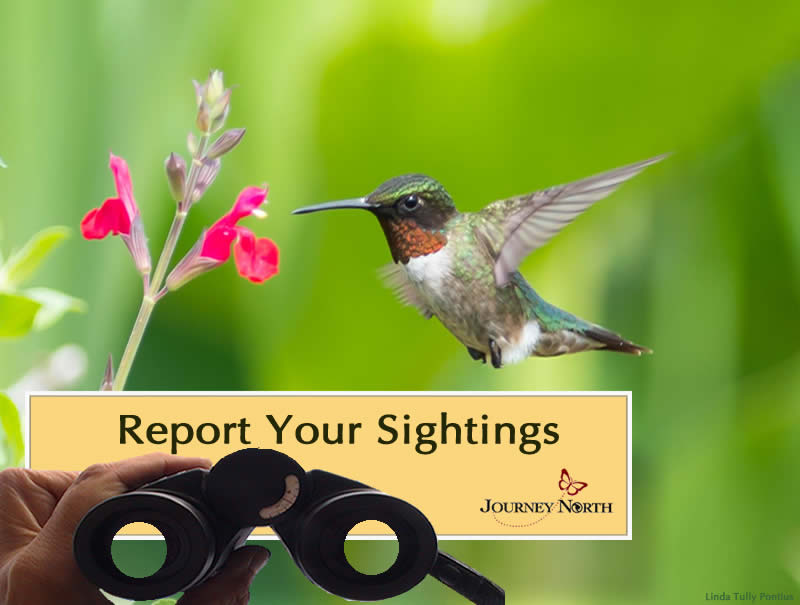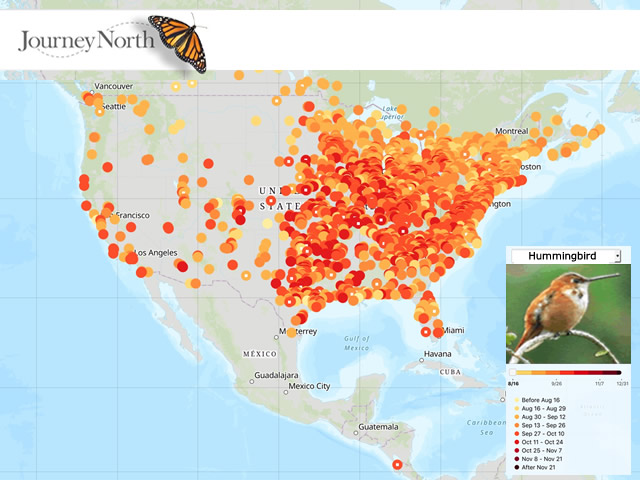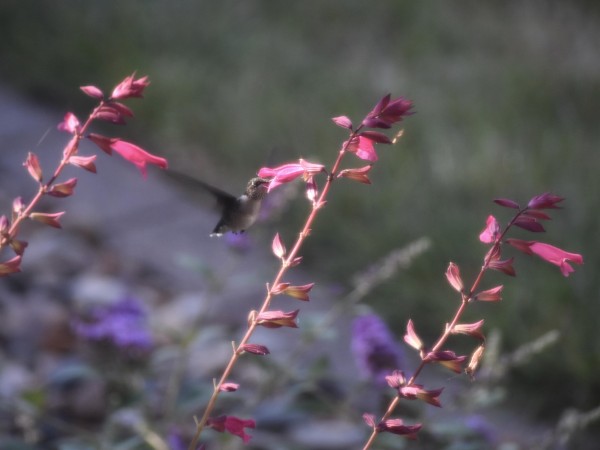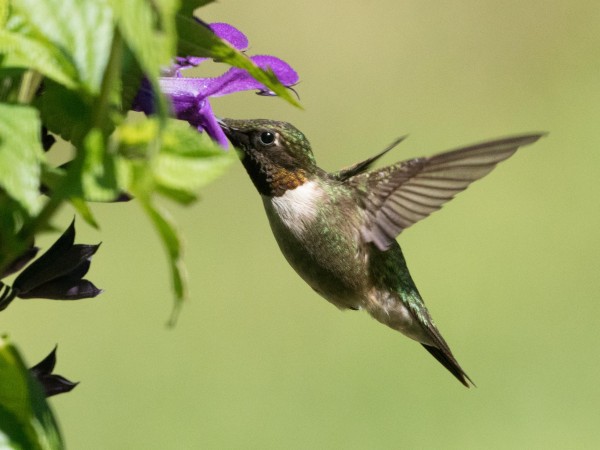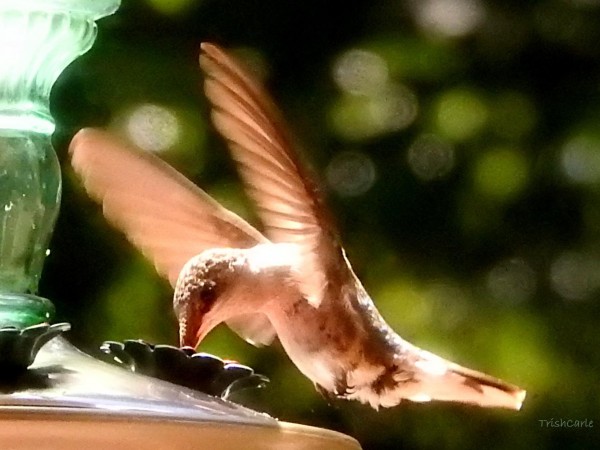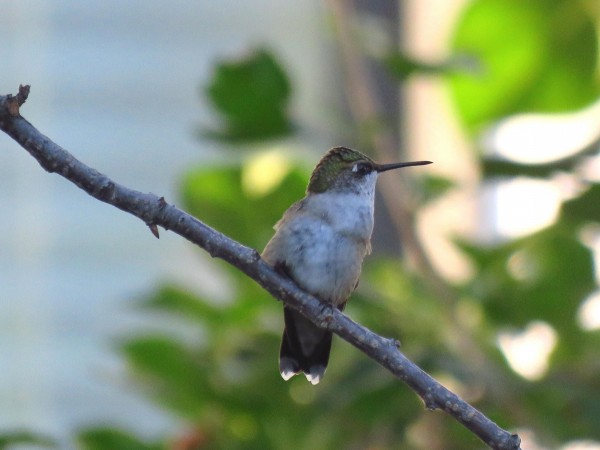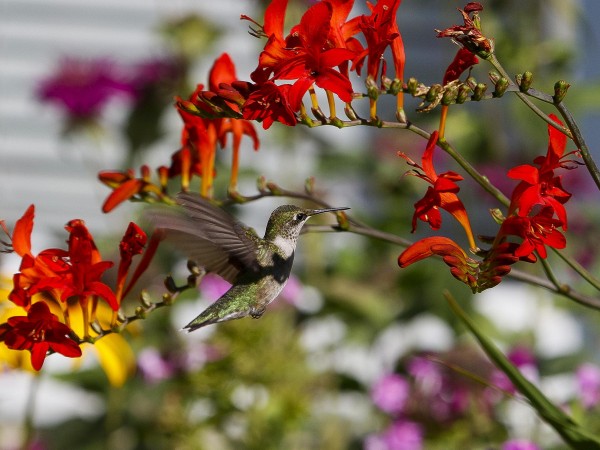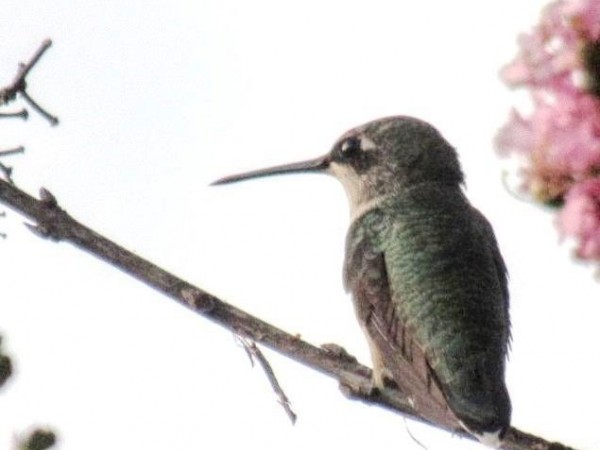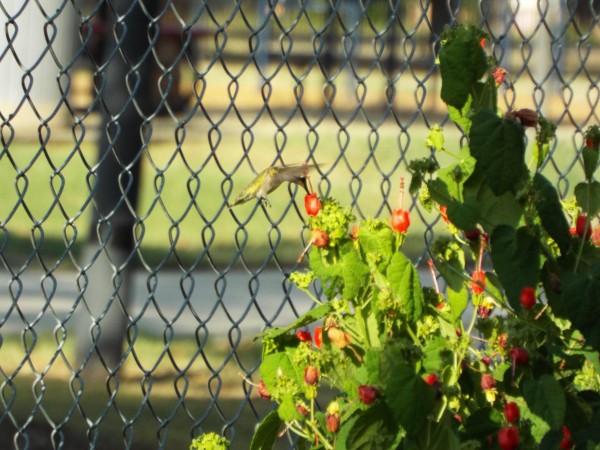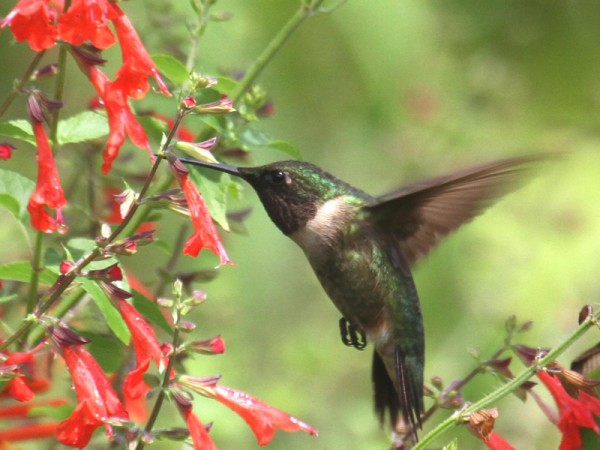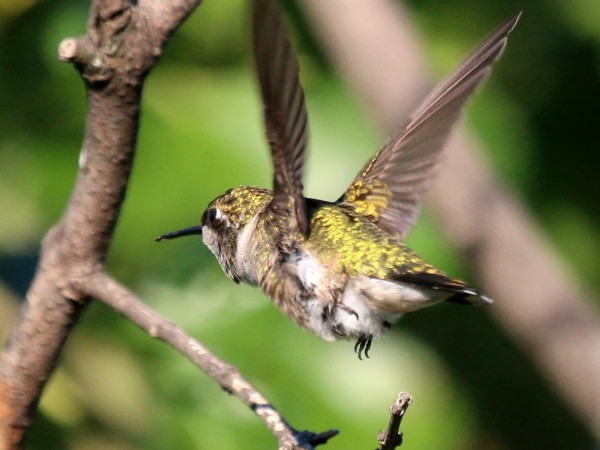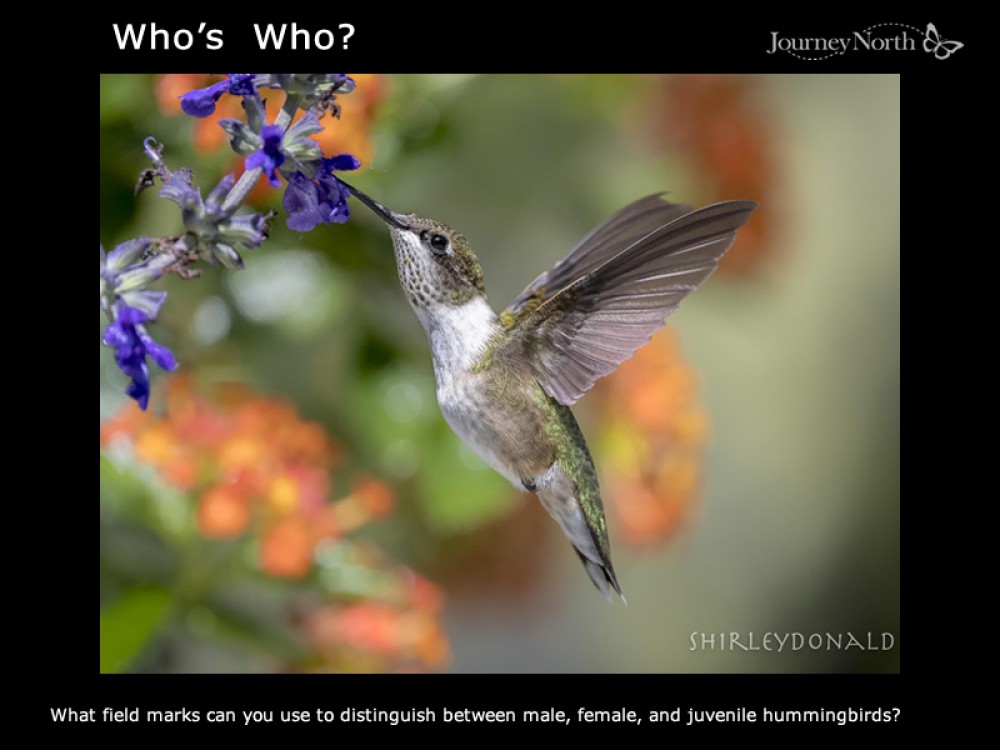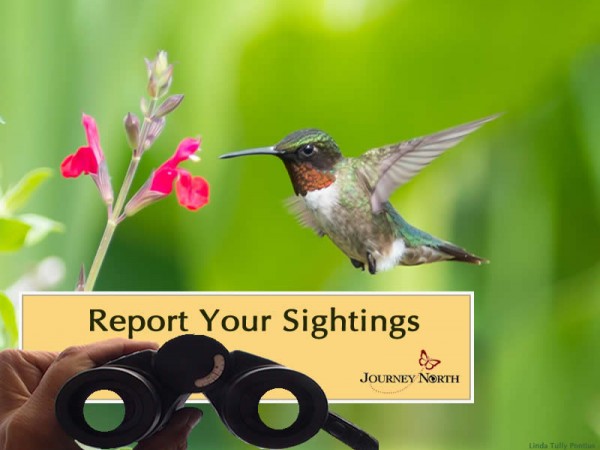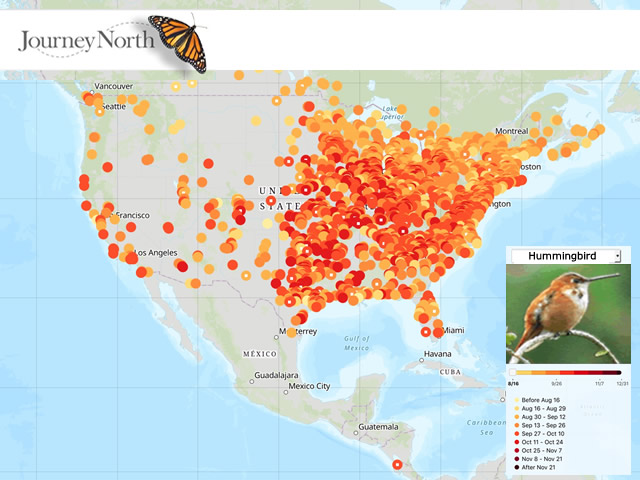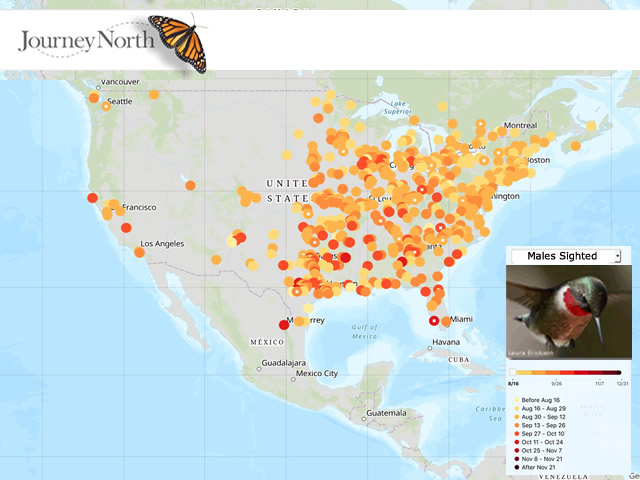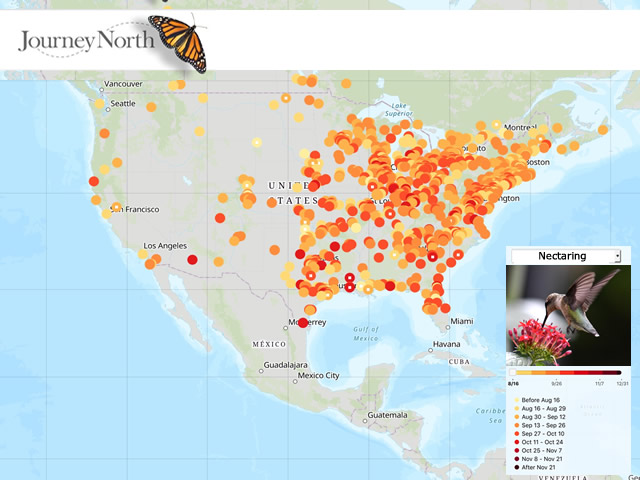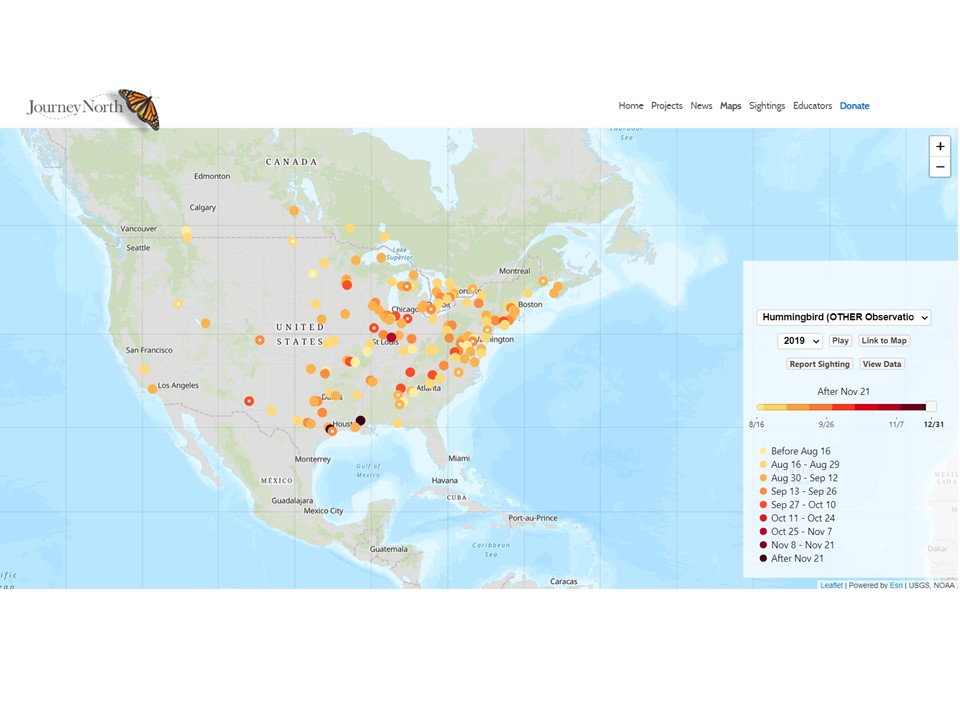Fall Migration Season is Underway!
Hummingbirds are fueling up and heading south to their wintering grounds. Get ready for an eventful season and help us track their migration by reporting your observations!
Migration Beckons
Hummingbirds migrate by instinct. Fewer hours of daylight trigger hormonal changes that cause the urge to fuel up and fly south. Males leave first – as early as mid-July – females follow, and the last to go are the juveniles who migrate for the first time all alone.
Watch hummingbirds go on a feeding frenzy before leaving the breeding grounds. They will feed often and intensely for days in a state called hyperphagia. Hummingbirds start feeding as early as forty-five minutes before sunrise and keep eating until dusk. Fueled by the nectar, hummingbirds double their weight as they prepare to fly hundreds or even thousands of miles.
Sightings on the Ground
Many Journey North citizen scientists are already reporting increased feeding activity. Others are seeing hummingbirds for just a few days before they continue their journey south.
Ruby-throated Hummingbird:
M in Pekin, IL: “8:30 am visit to Wendy's Wish Salvia. We are seeing male, female & juveniles [Ruby-throated Hummingbirds] more often now. Activity is picking up at flowers & feeders!” (08/02/2020)
Marjorie in Lowell Twp, MI: “This male [Ruby-throated Hummingbird] does his best to guard all three feeders and then grab a sip of salvia.” (08/07/2020)
Dale in Indianapolis, IN: “These guys [Ruby-throated Hummingbirds] are really tanking up--seems like they are getting ready to go somewhere. They are emptying my 3 feeders in 2 days.” (08/12/2020)
Trish in Fleetwood, PA: “Dozens of hummingbirds at my feeders and chasing each other around the yard. Also spotted resting in the pine tree. I think they're fueling up for their big trip! Mostly females and juveniles.” (08/14/2020)
Ken in Lethbridge, AB: “I only get hummingbirds in my backyard in Lethbridge during fall migration, usually in mid-August. This female Ruby-throated Hummingbird is my first hummingbird of the year. I don't know how long she will stay, but I saw her yesterday morning and evening.” (08/14/2020)
Sharen in Lillian, AL: “Male Ruby-throat came to feeder for a couple days but stopped coming.” (08/16/2020)
Rufous and Calliope:
Jim in Bend, OR: “Many Rufous juvenile males and females. The adult males were here the 3rd week in June migrating south and were gone around July 4th. The adult females followed and now left with the juveniles.” (08/04/2020)
Dr Paul in Osoyoos, BC: “For the first time since August 9, a hummingbird - female Calliope - visited my feeder which had been busy with around 10 distinct birds - mainly Calliopes and some Rufous - since mid-April. Today's bird was highly skittish, making several short visits or just hovering without drinking, responding to my minor slow movements. My last binoculars sighting had it headed due south toward the Okanogan flyway of northern WA!” (08/17/2020)
Track the Migration
Join us as we track the migration of hummingbirds traveling to their wintering grounds.
- Adult Males: The first hummingbirds to head south are adult males. Look for the bright, bold colors of the male to distinguish from females and juveniles. Report males under the category: Fall: Hummingbird Sighting (Adult Male). We are hoping for more reports of adult males to better determine "last seen" dates.
- Females and Juveniles: After the males have left, females and some juveniles will remain. Report females and juveniles under the category: Fall: Hummingbird Sighting
- Nectaring at Flowers: Hummingbirds will feed almost non-stop to prepare for migration. Report nectaring hummingbirds under the category: Fall: Hummingbird, Nectaring from Flowers.
Hummingbird Species tracked include: Ruby-throated, Rufous, Broad-tailed, Black-chinned, Allen's, Costa's, Calliope, and Anna's.
Start reporting now and continue to report until you see your last hummingbirds of the season. Fall migration is here!
Fall Migration 2020
Report at least once per week as long as hummingbirds are present. Do not report when you no longer see them.


